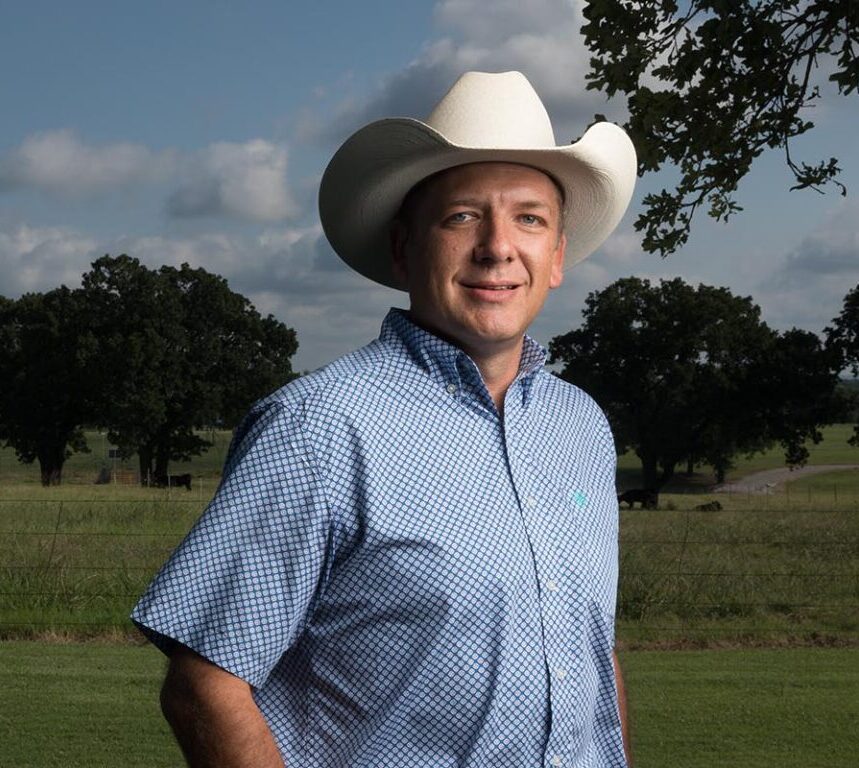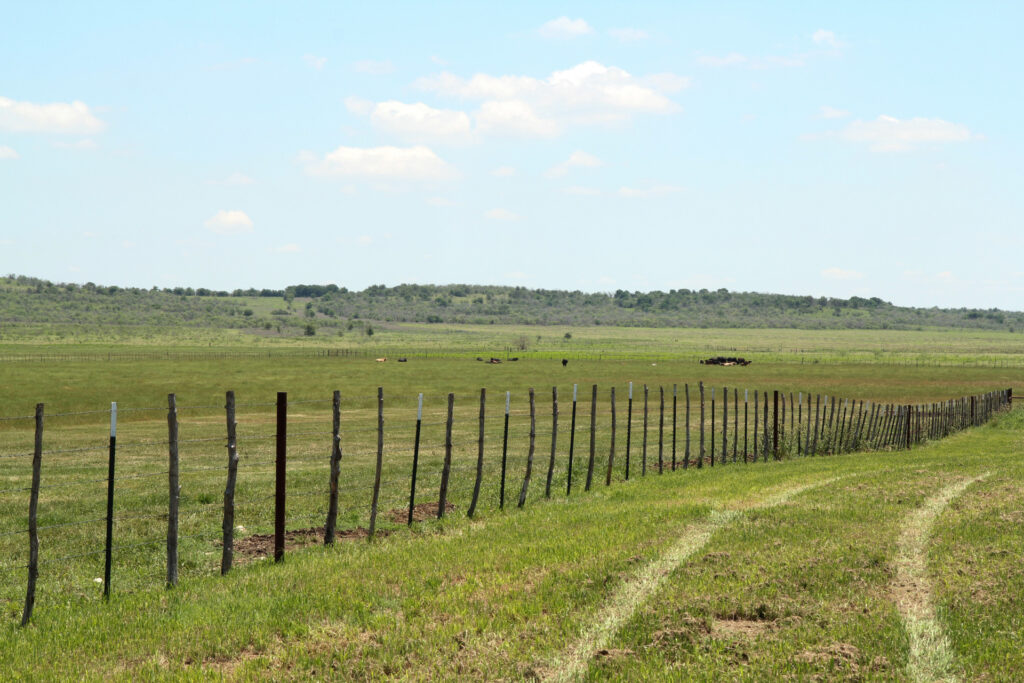Producer-minded research, outreach drives new face of Texas A&M McGregor Research Center
Ryon Walker serves as first onsite manager of facilities in years
The Texas A&M McGregor Research Center, one of the largest cow-calf facilities tied to a land-grant university, is on its way to becoming the go-to research facility for area livestock producers to look for answers under the direction of Ryon Walker, Ph.D.

Walker was hired in late 2021 as the first onsite manager of the McGregor facility in more than 15 years. The Department of Animal Science in the Texas A&M College of Agriculture and Life Sciences took over management of the research center, located about 100 miles northwest of Texas A&M University, in 1972.
Although he was not familiar with the McGregor Research Center, Walker’s acceptance of the position was a return to familiar territory as he was raised less than 50 miles away and had earned both his master’s and bachelor’s degrees in animal science from Texas A&M. He earned his doctorate in the physiology of reproduction in beef cattle from Colorado State University.
Walker brought with him extensive experience gained at the Noble Research Institute, Ardmore, Oklahoma; Hill Farm Research Station, Louisiana State University Agricultural Center, Homer, Louisiana; North Central Research and Outreach Center, University of Minnesota Extension, Grand Rapids; and the San Juan Basin Research Station and the Department of Animal Science, Colorado State University, Fort Collins. His research concentrated on beef cattle reproductive management as well as cow size and its effect on feed, fertility and production efficiency in beef production systems.
Rebuilding and strengthening
Walker said he knew there was work to be done, but “once I interviewed and learned about the center, I saw the opportunity of what this place could be. Moving forward, we want to manage this center with a producer focus.”
The research center is approximately 6,400 acres and runs about 1,000 spring-calving momma cows. It has the capacity to background weaned calves, graze them on small grain pastures, as well as feed out some cattle in a feedlot. Approximately 180 of the 400-plus acres of corn planted are used as a feed resource.

There are approximately 70 pastures with 77 miles of fence and a lot of mesquite encroachment. Brush control has been dealt with, but it is not where it needs to be. And pasture conditions were getting poor because of droughts and being overstocked. The facilities and infrastructure need a lot of work.
Those ongoing issues will continually be addressed, but most important to Walker is making the producer connection. Relying on his Extension background, he hosted a field day at the center in May — the first one there in 26 years — to invite the surrounding ranching community to learn about the center and what is happening there now.
“The producers will come; they just need to see value,” Walker said. “As big and productive as this place can be in terms of research and production outreach and education, it has been underutilized. That is something that will be one of the priorities moving forward.
Connecting to the producer
The center has been known for genetics research for many, many years. Walker said he wants to bring in research that directly connects to the producer.

“We’ve got to be able to manage the whole operation, the cow herd, as if a producer was managing it,” he said. “We are a research center, so when research projects come to McGregor, that becomes our priority; however, when we are not conducting research, we want a healthy ecosystem, a healthy environment and a healthy pasture system so we can graze cattle efficiently and manage from an economic standpoint like a producer would manage.”
Walker said they started by caring for the pastures and the soil the best they could with drought conditions. That required reducing the herd by about 130 cows due to the drought and wear on the pastures.
“Coming in, I also wanted the ability to bring in technology that is coming to the industry. We want to be on the forefront – test different agricultural technologies to see if they work, are they cost effective, can the producer afford them?”
A cloud-based cattle management software has already been implemented to manage the cow herd, pasture conditions, visualize of the pastures and water system, and inventory feed, hay and health products. The center also has technology to collect animal feed intake and methane output. And, Walker said he is looking at virtual fencing to manage grazing with no boundaries.
The endpoint, he said, is for technology to hopefully reduce labor needs, because labor is an issue; finding people who want to work the hours needed on a ranch is a challenge, especially during the summertime.
Changing the beef
Another change taking place is moving away from the longtime genetics research with the Nelore breed of cattle crossed with Angus cattle. Nelore is one of the true Bos indicus breeds known for heat tolerance and insect resistance. However, the U.S. cattle industry has not utilized this breed in their cow herds as much as was once expected.
Walker said they are transitioning to the Brahman breed and will focus on producing half-bloods from Brahman/Angus crosses for a percentage of the herd. Additionally, some faculty are working with reciprocal crosses to determine the sire influence on traits like birth weight, weaning weight, health, fertility and longevity.
“We plan to create a herd of half-bloods that will allow us to produce calves with lower percentage Brahman or higher percentage Brahman, depending on the research needs,” he said.
“But we still must maintain a herd that has a small percentage of Brahman to be more representative of the producers further north. Most all cattle in our herd have some ‘ear,’ meaning it has some percentage of Brahman, crossed with either Angus, Hereford or a cross.”


